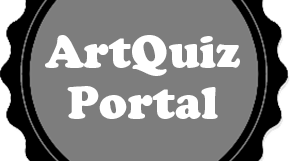Poet, satirist, critic, and playwright.
John Hamilton Reynolds, poet, editor, critic, reviewer, is best remembered as being a close friend and correspondent of the poet John Keats. Reynolds and Thomas Hood collaborated to write several comic and satirical pieces, signed and unsigned; the most popular of which was Odes and Addresses to Great People (1825). He died in Newport on the Isle of Wight in 1852.Reynolds was born in Shrewsbury to George Reynolds and Charlotte Cox Reynolds. His father was a school teacher; his mother was related to the Hamilton family (from which Reynolds received his middle name), which included the Gothic writer William Beckford. Reynolds attended the Shrewsbury school where his father taught, then enrolled at St. Paul`s in London when the family moved in 1806. He graduated from St. Paul`s in 1810, completing his formal education. He took a junior clerkship in an insurance office, the Amicable Society for Perpetual Insurance, working there at least through 1816. In the meantime, he pursued his self-education by reading widely in classical and English literature and also began writing poetry. He was encouraged in his literary interests by his friend John F. M. Dovaston, a former student of Reynolds`s father. Reynolds`s first published poem, “Ode to Friendship, Inscribed to J. F. M. Dovaston of West Felton,” appeared in the Gentleman`s Magazine in 1812.
He continued publishing poems and articles in such periodicals as Repository of Literature, Arts, and Sciences, Gentleman`s Magazine, and Ladies` Museum, then released his first major work, the long poem Safie; An Eastern Tale, in 1814. Only twenty years old at the time, Reynolds received favorable notice from a number of critics and poets, including Lord Byron, whose work Reynolds had closely imitated. Later that year, he published The Eden of Imagination, this time imitating Wordsworth, who also encouraged the younger writer. He published these poems under the auspices of his friend John Martin, who also hired Reynolds as a poetry editor for the Inquirer.
In 1815 Reynolds moved on to the Champion, where he was the literary and theater editor until 1817. Both journals provided Reynolds with a ready forum for his poetry, literary criticism, and theater reviews. With the publication of The Naiad: A Tale. With Other Poems in 1816, Reynolds took a step forward in his poetry by moving away from purely imitative efforts. Also during this period, Reynolds became associated with a literary circle formed around a family of young women in Devon. Mary, Sarah, and Thomasine Leigh often entertained Reynolds`s friends Benjamin Bailey and James Rice, and Reynolds joined the group sometime in 1815. The friends warmly encouraged Reynolds as the true poet of the group, which spent hours together writing, copying verses, and discussing poetry. His friend Leigh Hunt also supported his writing and introduced him to another young poet Hunt greatly admired, the then unknown John Keats. Keats and Reynolds became fast friends, encouraging and challenging each other in their quest for literary recognition.
In 1816, Reynolds took the bold step of leaving his clerkship to live solely by his writing. This endeavor was short lived, and by late 1817 Reynolds began practicing law when his friend Rice took him on as a partner in his father`s firm. Biographers speculate that Reynolds`s decision was motivated by his plans to marry Eliza Powell Drewe and the need to set up a household with a reliable income. Nevertheless, he continued writing and published Peter Bell, a parody of Wordsworth, in 1819; The Fancy in 1820; and The Garden of Florence and Other Poems, the fruit of his friendship with Keats, in 1821. He also wrote for several periodicals, including the Yellow Dwarf, London Magazine, Edinburgh Magazine, and the Edinburgh Review.
After a lengthy engagement, he married Eliza Drewe in 1822, which led to a friendship and literary collaboration with her brother-in-law, Thomas Hood. Together the two wrote several comic and satirical pieces, signed and unsigned, the most popular of which was Odes and Addresses to Great People (1825). This was Reynolds`s last publication in book form during his lifetime. He began writing non-literary prose for the magazine Athenaeum and produced a handful of theatrical scripts. Money was becoming a problem, as his attention to his primary career, the law, was sporadic at best, and tragedy struck in 1835 when his ten-year-old daughter Lucy died.
He was bankrupt in 1838 but continued eking out a small income writing for Bentley`s Miscellany, the New Monthly, and other magazines. In 1847, Reynolds gave up the law completely and subsequently moved to the Isle of Wight to work as an assistant clerk in a county court. Most biographical accounts suggest that at this point in his life Reynolds was depressed and drinking heavily, although he was not without friends and admirers to the end. He died in Newport on the Isle of Wight in 1852.
The script ran 0.017 seconds.



